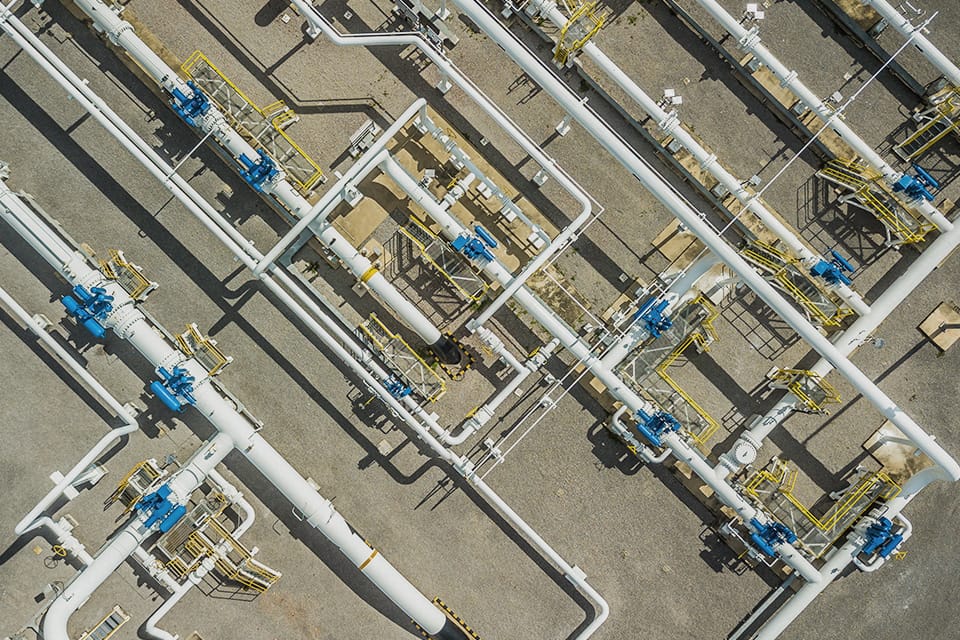
How Midstream Companies are Shaping the Future of Energy

The energy industry is experiencing transformations fueled by technological advancements, increasing awareness of environmental concerns, and changing market dynamics. Midstream companies, essential for transporting and storing oil and gas, play a role in this shift. They use their expertise and resources to design strategies to improve supply chain efficiency and sustainability. These new tactics help them cater to the sector’s evolving demands.
This article delves into seven approaches midstream firms employ to foster innovation within the energy field.
Seven Tactics Employed by Midstream Companies to Revolutionize Energy
1. Embracing Emerging Technologies
An expanding number of midstream businesses are integrating cutting-edge technologies to boost productivity, including but not limited to:
- Internet of Things (IoT)
Embedded sensors leveraging technology at facilities, pipelines, and storage locations gather data to predict maintenance requirements, prevent disruptions, and monitor equipment performance proactively.
- Data Analytics
Advanced analytic tools scrutinize datasets to identify patterns and trends, assisting management in making informed decisions to improve efficiency and maximize asset utilization.
- Cloud Services
Leveraging cloud-based computing supports midstream enterprises in handling amounts of data while enhancing communication and collaboration among teams spread across locations.
2. Embracing Renewable Energy Sources
Midstream companies realize the importance of integrating energy sources into their operations and diversify their investment portfolios to adapt to the changing energy landscape.
Many of these companies are exploring technologies such as:
- Producing hydrogen
- Capturing, utilizing, and storing carbon (CCUS)
- Developing wind and solar power projects
- Setting up virtual power plants
These eco-energy solutions assist midstream companies in combating climate change. Also, delivering these energy sources will require constructing new transportation networks and infrastructure. This need will enable midstream companies to utilize their pipeline fabrication, storage, and processing expertise.
3. Expanding the Infrastructure
Midstream companies are enhancing their network capacities to transport energy sources and address rising energy demands. This expansion requires the construction of facilities like plants, pipelines, and storage units tailored for various energy sources, including the following:
- Biofuels
- Sustainable hydrogen
- Eco-friendly diesel
- Crude oil
- Natural gas
These organizations must manage these infrastructure expansions with great care for environmental and social responsibilities. For instance, midstream companies collaborate with organizations, government bodies, and local communities to uphold Indigenous rights and minimize environmental impact.
4. Promoting Innovation and Collaboration
Encouraging innovation and fostering collaboration is crucial for midstream companies navigating the evolving energy landscape.
Transitioning towards a diverse energy mix comes with various challenges, such as optimizing current infrastructure and innovating new technologies. By collaborating, these organizations can draw insights from others, gaining perspectives and resources.
More specifically, this cooperative approach helps them do the following:
- Combine resources and expertise
- Share knowledge and ideas
- Access new research opportunities
- Follow industry standards
- Promote best practices
5. Building a Sustainable Future
Midstream companies also help support a sustainable future through environmental, social, and governance (ESG) initiatives. Many of these organizations have already set up strategies to promote sustainability, including the following:
- Reducing greenhouse gas emissions
- Improving water management practices
- Supporting biodiversity preservation
- Minimizing waste production
- Enhancing energy efficiency
6. Advancing Workforce Development
Looking towards the future of the energy industry, midstream companies need to focus on developing their workforce. The energy sector is transforming due to environmental concerns, technological advancements, and shifting market dynamics.
As a result, these companies rely on employees to address challenges and take advantage of opportunities, meaning these workers play a significant role in driving growth and ensuring long-term success. However, management must provide them with the skills to navigate the changing energy landscape through workforce development programs to achieve this success.
Individuals and fresh perspectives are vital for midstream companies to compete effectively in the changing energy sector. They contribute to creating cutting-edge technologies and sustainable practices that are key for maintaining an edge in the industry.
7. Expanding Global Reach
To make an impact on the energy industry, midstream companies must continue expanding their presence. The energy demand worldwide is rising rapidly due to:
- Urbanization
- Industrialization
- Population growth
- Improved living standards
- Increased transportation needs.
By enhancing transportation networks and distribution systems, midstream companies can help the delivery of essential resources to international markets, helping to ensure that vital commodities reach their destinations promptly.
These companies can also take advantage of emerging energy markets by promoting the adoption of technologies and renewable energy sources. They can supply energy globally, ensuring dependable, efficient, and environmentally friendly distribution to meet the increasing demand worldwide.
Addressing Energy Challenges Requires the Right Solutions
Midstream companies are significantly shaping the energy landscape by using the abovementioned strategies. These tactics help them drive energy sector resilience and sustainability, meet society’s calls for more responsible practices, and, most notably, foster the industry’s transition towards energy alternatives.
As noted earlier, these strategies require a capable workforce trained to handle an ever-changing energy landscape. Management must ensure they choose the right partner to provide that training and offer ongoing support from industry experts.
However, even the best-trained workers are only as effective as the organization’s safety measures. Midstream companies must design an effective game plan and best practices to ensure the well-being of everyone on the worksite.
Consider working with us to tailor training, risk management, and sustainability solutions to meet your needs and jumpstart your energy initiatives.
Contact us today to learn more.




